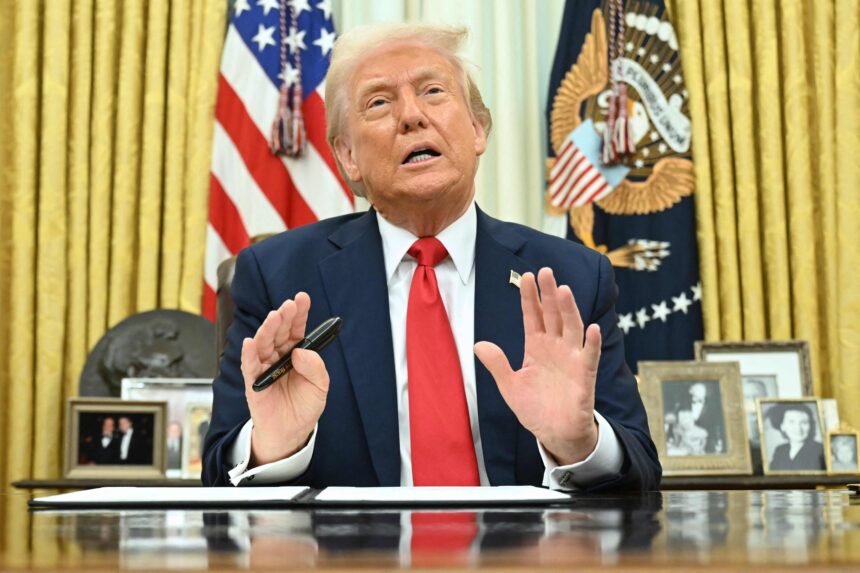WASHINGTON – US trading partners scrambled yesterday to prepare for the latest raft of Donald Trump tariffs.
The US president left unclear who would be targeted by the tariffs but promised to be “very kind” in addressing what he describes as unfair trade imbalances.
Trump, who has made unprecedented use of presidential powers since taking office in January, stated he could announce exactly what “reciprocal tariffs” would be imposed.
According to the Republican billionaire, the world’s largest economy has been “ripped off by every country in the world,” and he is promising “Liberation Day” for the United States.
When asked for details, he told reporters on Monday: “You’re going to see in two days, which is maybe tomorrow night or probably Wednesday (today). We’re going to be very nice, relatively speaking; we’re going to be very kind.”
Critics warn that this strategy risks a global trade war, provoking retaliation from major trading partners like China, Canada, and the European Union. Over the weekend, China, South Korea and Japan agreed to strengthen free trade among themselves.
But Trump stated he was not concerned that the levies would push allies toward Beijing, adding that a deal on TikTok could also be tied to China tariffs.
White House Press Secretary Karoline Leavitt indicated that the goal today would be to announce “country-based tariffs,” although Trump remains committed to imposing separate, sector-specific charges.
The Wall Street Journal reported that Trump’s advisers suggested implementing a 20% global tariff to affect nearly all US trading partners. Trump has remained vague, asserting that his tariffs will be “far more generous” than those already applied against US products.
The uncertainty has jolted markets, hammering equities across the board and fuelling recession fears. Asian stocks, which sharply fell on Monday after Trump indicated his tariffs would include “all countries,” rebounded somewhat yesterday following his promises to be “nice.”
Trump’s focus on tariffs is exacerbating US recession fears. Goldman Sachs analysts increased their 12-month recession probability from 20% to 35%. This reflects a “lower growth forecast, declining confidence, and statements from White House officials indicating a willingness to tolerate economic pain.” Goldman Sachs also raised its projection for underlying inflation at the end of 2025.
For now, IMF chief Kristalina Georgieva mentioned that Trump’s tariffs are causing anxiety, but their global economic impact should not be dramatic. China and Canada have implemented counter-tariffs on US goods, while the EU has revealed its own measures set to begin in mid-April. EU chief Ursula von der Leyen said yesterday that the bloc still hopes for a “negotiated solution,” but that “all instruments are on the table” to retaliate if necessary.
The EU has already faced several US tariff announcements since Trump returned to office in January, including a 25% levy on auto imports set to take effect tomorrow.
In addition to reciprocal country tariffs, Trump’s “Liberation Day” announcement might include additional sector-specific levies on pharmaceuticals and semi-conductors.
Economists have anticipated that the upcoming measures could target the 15% of partners with persistent trade imbalances with the United States, a group that US Treasury Secretary Scott Bessent labelled the “Dirty 15.”
The United States has some of its most significant goods deficits with China, the EU, Mexico, Vietnam, Taiwan, Japan, South Korea, Canada and India.
-Nampa/AFP


